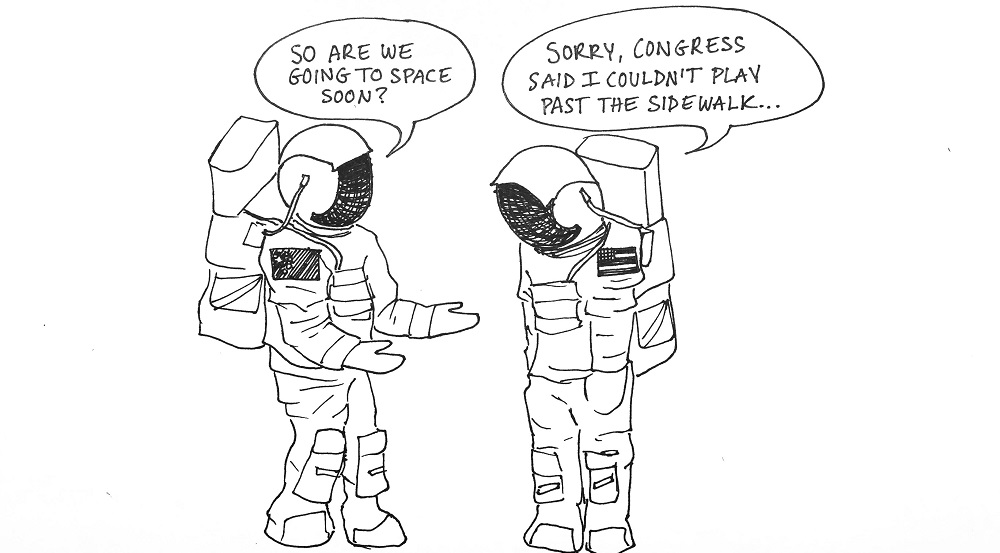
The Chinese government is rife with corruption, commits horrible human rights abuses, bullies its neighbors and promotes environmentally degrading and polluting policies, among other offenses. But while the Chinese government, led by the Chinese Communist Party (CCP), has many flaws, it’s making remarkable progress in the field of space exploration. As the American space program drifts directionless and is in a persistent hunt for funding, the Chinese space program is focused and flourishing. If the CCP maintains its focus on space exploration and its current plans stay on track, China is poised to have one of the greatest, if not the greatest, space program in the world in the 21st century.
The CCP is firmly committed to making China a premier power in outer space in their quest to solidify China as a premier superpower. And, because China is an authoritarian state, the CCP is able to push its vision without opposition. While the National Aeronautics and Space Administration (NASA) has to constantly plead to Congress for money in the United States for its next project, the Chinese National Space Administration (CNSA) has no such issues. Because the CCP supports CNSA, it is able to operate with far less budgetary concern and is able to focus on a long term agenda.
China’s quest to become a space power on par with the United States has made dramatic progress in recent years. In the realm of human space flight, China has gone from putting its first taikonaut (the Chinese name astronaut) into space in 2003, to its first spacewalk in 2008, to building and manning a spacelab in 2012. In the coming years, there are plans for a permanently manned space station by 2020, a probable moon visit by 2025 and maybe even a mission to Mars — although the manned missions to the moon and Mars have never been announced formally.
In the realm of robotic space exploration, the CNSA has made even more dramatic progress. China has engaged in unmanned space activities since the 1950s as part of the Cold War, but its program lagged far behind that of the United States, the Soviet Union or any European countries. But, as China has emerged as a true great power since the turn of the millennium, the Chinese space program has likewise become more world-class.
In 2003 and 2004, CNSA and the European Space Agency (ESA), launched two satellites to study the Earth’s magnetosphere. Then, in 2007 and 2010, CNSA sent two probes to the moon to take pictures. In 2013, making news around the world, the Chang’e 3 moon rover landed on the moon’s surface, where it still resides.
Going forward, CNSA plans to send an unmanned mission to Mars by 2020 and launch an x-ray telescope in space. CNSA is also in the middle of building a satellite navigational system of its own, like the American GPS or the Russian GLONASS, called the BeiDou Navigation Satellite System. As of now BeiDou covers the Asia-Pacific region, and it will cover the whole globe by 2020. Next year, CNSA plans to launch the Tiangong-2 spacelab, in which taikonauts will conduct science experiments. A new launch facility was just completed on Hainan Island, in the South China Sea. This new facility will be able to launch bigger rockets than any Chinese bases currently can, setting the stage for many of these future missions.
All of these cosmic developments ensure that China will have a world-class space program in coming decades. This promise is in sharp contrast to the American space program, which Jeffrey Plescia, chairman of the Lunar Exploration Analysis Group, says, “has been floundering around for decades, trying to figure out what to do.”
While during the 1960s, and to a lesser extent 1970s and 1980s, the United States dreamed of going to the moon and pulling ahead of the Soviet Union in the space race, American efforts in space have been fairly directionless since the end of the Cold War.
Presidents George W. Bush and Barack Obama have both talked of sending American astronauts to Mars by the 2030s, but given the current state of NASA’s efforts, this seems like an increasingly unlikely prospect. Congress does not like giving money for space exploration, given the long time horizons of space exploration missions — years, if not decades — and their diffuse benefits. It’s very hard to measure the benefits of space exploration’s contributions to science and the inspiration that it instills in the American public.
Maybe though, if China starts to surpass the United States, in the caliber of its space program, the United States will feel incited to catch up and return to a focused and vibrant space program. The United States, in its incessant quest for global preeminence, likely would not tolerate a China superior to it in the cutting edge field of space exploration. Another space race could take off between the United States and China.
The space race of the Cold War between the United States and the Soviet Union was fueled by nuclear paranoia and the ever-present specter of mutually assured destruction. Today, tensions between the United States and China are not nearly as high as those of the Cold War. There is virtually zero threat of nuclear war between the United States and China. Therefore, if a new space race is to emerge between the United States and China, it will be on much less threatening terms. It would reinvigorate American efforts in space.
China’s fledgling space program should be seen as a model. Not only will it advance humanity’s efforts to explore the cosmos, it will also hopefully reinvigorate the United States to do the same.
Ben Perlmutter is a College junior from Chappaqua, New York.

